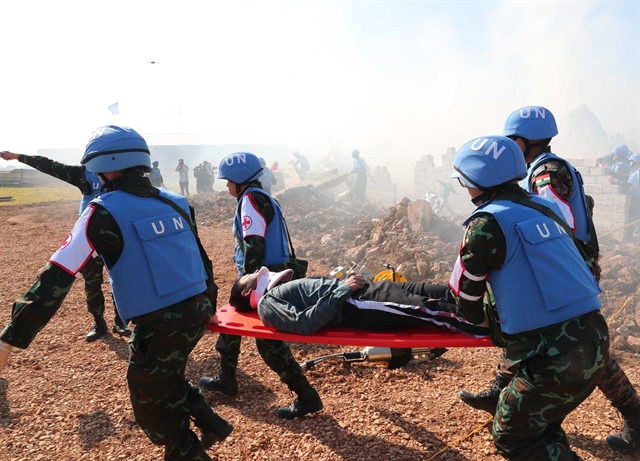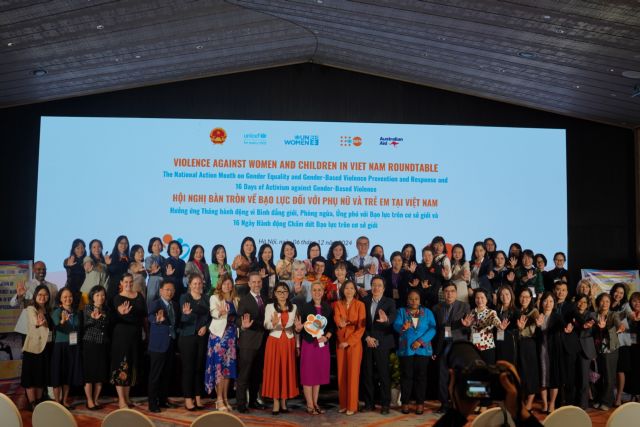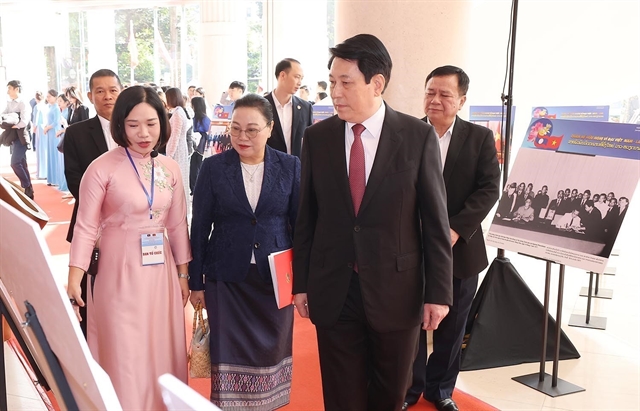 Society
Society


|
| Representatives at the conference express their commitment to end violence against women and children. — VNS Photo Thu Trang |
HÀ NỘI — Việt Nam has built an inter-sectoral system to prevent violence against women and girls during the past years, in which social workers play an important role.
Đặng Hoa Nam, Director of the Child Affairs Department under the Ministry of Labour, Invalids and Social Affairs, stated in an event held on Friday in Hà Nội.
He made the statement at the "Roundtable conference on violence against women and children in Việt Nam" organised by the United Nations Population Fund (UNFPA), United Nations Children’s Fund (UNICEF) and United Nations Entity for Gender Equality and the Empowerment of Women (UN Women) with financial support from the Australian Government.
The event was held in response to the national action month on gender equality, prevention and response to gender-based violence.
Speaking at the conference, Nam confirmed that Việt Nam had made great progress in preventing violence against women and children.
The Government has strengthened policies such as the Law on Domestic Violence Prevention and Control, the Law on Children and implemented national programmes to end violence against women and children.
The country has an effective inter-sectoral coordination system, connecting representatives from ministries and sectors, demonstrating the strong commitment of the Government and authorities to create changes in preventing violence against women and children.
The Government also issued a decree on developing social workers, in which one of the priority is ending violence against women and children.
Pauline Tamesis, Resident Coordinator of the United Nations in Việt Nam, emphasised that in the next decade, Việt Nam needed to focus on integrating support services across sectors, building trust in the community and strengthening data systems.
She proposed making efforts to support the needs of adolescents, listening to the voices of those who have been abused, engaging men and boys and changing harmful norms.
Director Nam confirmed that addressing violence against women and children required collaboration between social welfare, health, justice, policing and education.
Technology, in particular, can help ensure stable support for violence victims.
“Authorities at all levels need to have a reasonable fund and human resources so that intervention measures and prevention of violence against women and girls are more effective and sustainable,” he said.
“Local authorities’ efforts and international organisations’ support will help Việt Nam take the lead in achieving sustainable development goals, including the goal of eliminating violence against women and children,” said Nam.
Sharing lessons from Australia to combat gender-based violence, Micaela Cronin, Australian Domestic Violence and Sexual Abuse Commissioner, said that in Australia, person-centred approaches and coordinated services were the key to making a difference.
She added that Việt Nam’s integrated strategies were promising.
During the conference, experts agreed that violence against women and children had common root causes of social norms, gender inequality and weak response and support policies.
Violence can last for generations with long-term consequences for physical and mental health. Girls and boys who are exposed to violence are more likely to experience or commit violence as adults.
To break this vicious cycle, there must be a shift in awareness and resolving violence in the community. — VNS




